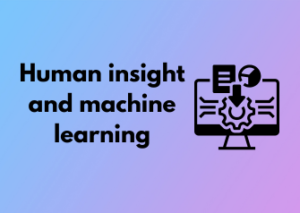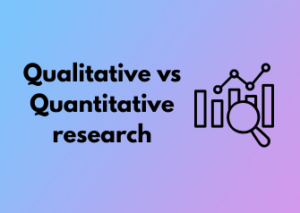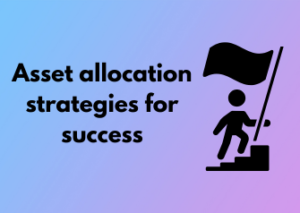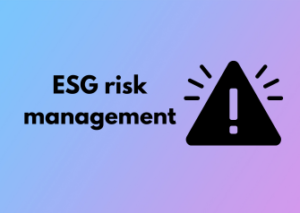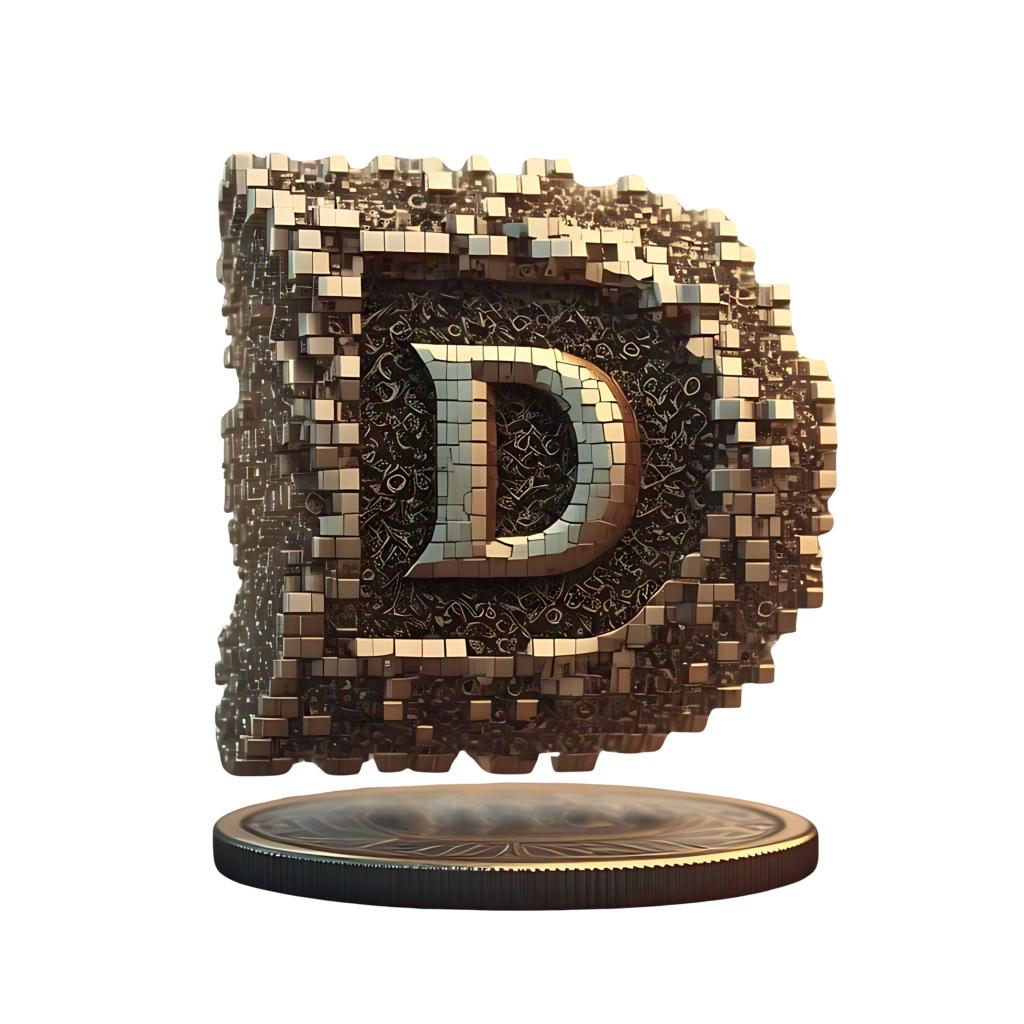Hello there! Let’s talk about something super exciting happening in the world of blockchain. The era of cryptocurrency being primarily about speculation and get-rich-quick schemes is slowly giving way to a more meaningful use of tokens. Yep, we’re talking about alternative uses for tokens — and trust me, it’s much more than just tracking prices on a graph!
Tokens That Do More Than Sit in Your Wallet
For the most part, tokens have been seen as investments — you buy low, sell high, and hope to strike it big. But now, innovators are exploring ways to create tokens with real functional value outside of trading. Think of them as tools, not just assets. Isn’t that refreshing?
Consider governance tokens, for example. These are tokens that let holders vote on the future of blockchain projects or protocols. This gives token holders a literal seat at the table, enabling active participation in decision-making. It’s like being a shareholder — but often even more democratic and transparent. No fancy boardroom required!
Real-World Utility: Tokens That Power Ecosystems
Another fascinating shift is the introduction of utility tokens, which play key roles in ecosystems where you can exchange them for goods, services, or privileges. For instance, gaming tokens might let you buy virtual items or access premium features in online games. Tokens like these are helping create self-sustaining economies that connect developers and users in a whole new way.
Similarly, social tokens are booming. Imagine your favorite creator launching their own token that you can buy to unlock unique content, access private communities, or even attend exclusive events. This allows fans to directly support and connect with their favorite creators while also gaining perks. It feels more rewarding, doesn’t it?
Fighting Climate Change and Beyond
Here’s something you might not expect: tokens are increasingly being tied to social and environmental causes. Picture this: you buy a token that represents carbon credits, which can then be retired (essentially “used up”) to offset pollution. Some platforms are leveraging token systems to fund renewable energy projects or even track the ethical supply chain of food and goods.
Such applications showcase the transformative power of blockchain in addressing global challenges. Isn’t it amazing how we’ve moved from speculation to actual impact?
Key Takeaways for Navigating This New Era
- Brace for innovation: As developers dream up new token designs, expect an explosion of use cases rooted in real-world value.
- Do your homework: Not all tokens are created equal. Before jumping into a token ecosystem, check its purpose and potential longevity.
- Think beyond trading: Explore projects that align with your values or interests, whether it’s gaming, governance, or sustainability.

How Blockchain Is Transforming Real-World Asset Management
When most people think about blockchain, their minds often jump straight to cryptocurrencies or NFTs. But did you know that beyond Bitcoin and digital art, blockchain is quietly revolutionizing how we manage real-world assets? Yes, you heard that right! From simplifying property ownership to transforming supply chains, this technology is introducing a new wave of efficiency and transparency to traditional industries.
What Are Real-World Assets, and Why Does It Matter?
Real-world assets (RWAs) refer to physical or tangible items like real estate, commodities, fine art, or even cars. Traditionally, managing these assets has been a complex beast—filled with middlemen, paperwork, and, let’s face it, inefficiencies. Here’s where blockchain works its charm: by digitizing ownership and transactions, it makes asset management more fluid, secure, and accessible.
For example, imagine you’re buying an apartment. It typically involves tons of middlemen (lawyers, brokers, notaries) and weeks of processing. But with blockchain, property ownership can be tokenized into smart contracts, turning a sluggish process into a few swift clicks. Plus, you’ll have an immutable record of ownership. Sounds like a dream, right?
Tokenization: Redefining Ownership
One of the most exciting applications of blockchain in real-world asset management is tokenization. This process breaks down an asset into smaller digital shares, or tokens, that can be traded, sold, or even rented out. Think fractional ownership!
For instance:
- Artwork: Imagine owning a piece of a $10 million painting without shelling out millions. Blockchain makes it possible to split the ownership among investors through digital tokens.
- Real Estate: You could invest in a share of a luxury penthouse in New York City, or rent out your tokenized portion for passive income.
- Commodities: Gold bars, diamonds, and even agricultural products can be tokenized and traded more efficiently.
Streamlining Supply Chains
Ever wondered whether the coffee you’re drinking is actually “fair trade”? Or if the clothes you’re wearing were ethically sourced? Blockchain is stepping in to answer these questions and tackle inefficiencies in supply chains. By tracking products from origin to destination, blockchain provides real-time transparency.
For example:
- Food traceability: Consumers can scan a QR code on produce to verify its farm-to-table journey.
- Luxury goods: Blockchain helps authenticate whether designer handbags or diamond rings are legit—not fake knockoffs.
This level of visibility keeps suppliers accountable and empowers consumers with trustworthy information.
Beyond Convenience: Security and Fraud Prevention
Blockchain technology is inherently secure because it relies on decentralized networks and cryptographic principles. This makes it incredibly resistant to fraud, tampering, and hacking. Whether you’re buying property, tracking a shipment, or validating an item’s authenticity, blockchain ensures that the data is immutable and verified.
In traditional systems, verifying a property deed or product origin can involve a lot of back-and-forth and potential fraud risk. But on a blockchain network, the transparency and irreversible nature of transactions eliminate these vulnerabilities.
Integrating Blockchain Into Everyday Platforms
Blockchain is no longer just a buzzword at tech conferences or confined to cryptocurrency discussions. It’s now stepping out of its niche origin story and moving directly into the apps and services we use on a daily basis. But what does this integration really mean? And why should we care? Let’s dive into the exciting ways blockchain is being woven into our everyday platforms and how it’s quietly transforming our digital lives.
Why Integrate Blockchain Into Mainstream Platforms?
One of blockchain’s superpowers is its ability to provide transparency, security, and trust without relying on middlemen. These qualities are game-changers for platforms and services that deal with sensitive data, financial transactions, or digital interactions. Think about it: wouldn’t you feel more comfortable using e-commerce apps or ride-sharing platforms where the transactions and records are both transparent and tamper-proof?
The idea is simple: wrap powerful blockchain technology into platforms that we already use, without us even realizing the gears churning underneath. The goal isn’t to change the user experience drastically but to enhance it so that people get more trust, fairness, and control without added complexity.
Real-World Blockchain Integrations
As blockchain technology matures, we’ve started to see notable use cases in some of the most popular platforms:
- Gaming: Video games are leading the charge with blockchain-based items. Many platforms now allow players to own in-game assets like skins, weapons, or virtual real estate as NFTs (non-fungible tokens), meaning that you actually own them instead of just borrowing them from the game. You can sell or trade these assets, even outside the game!
- Social Media: Blockchain-based networks such as Lens Protocol and decentralized alternatives are introducing revenue-sharing models for creators. Imagine being paid directly for your content without any intermediaries taking a huge cut.
- Supply Chain Platforms: Some grocery delivery platforms and retail chains are using blockchain to track the origins of their products. Picture scanning a QR code to know exactly where your coffee beans came from and how environmentally friendly the process was—cool, right?
- Healthcare Apps: Platforms that deal with sensitive health data are turning to blockchain for secure record-keeping. Blockchain ensures no unauthorized tampering occurs, making it safer to share medical records with doctors or insurance companies.
Challenges to Smooth Integration
While the idea sounds magical, integrating blockchain into everyday platforms isn’t without hurdles. For starters, many people don’t yet understand blockchain, which means user education must go hand-in-hand with adoption. Businesses also face the challenge of balancing blockchain’s decentralized architecture with user-friendly interfaces and performance expectations. No one wants to wait longer for something that used to be instantaneous!
Another key bottleneck is scalability. While blockchain solutions are getting faster and cheaper (thanks to developments like Layer-2 scaling, but let’s save that for another discussion), they still aren’t ready to fully replace centralized systems in high-demand environments… yet.
Growing Focus on Decentralized Identity and Privacy Tools
Let’s talk about one of the most critical, yet often overlooked, aspects of blockchain’s evolution: decentralized identity (DID) and privacy tools. If you’ve been keeping an eye on developments in the Web3 space, you’ve probably seen how identity and privacy are becoming hot topics. After all, as we move beyond the hype of DeFi and NFTs, the question arises: how do we bring blockchain into our daily digital lives in a way that’s both secure and privacy-focused?
The Problem: Centralized Identity Systems
We live in a world where our digital identities are scattered across multiple platforms. Ever logged into a website using a social media account like Facebook or Google? You’ve essentially handed over bits of your personal data to centralized entities that make billions by leveraging your information. Unfortunately, these systems not only compromise our privacy but are also prone to breaches and mismanagement.
This is where decentralized identity tools come into the picture. Imagine a world where you alone control your identity – from your credentials to who gets access to your data – without relying on a middleman.
What Is Decentralized Identity?
Decentralized identity, or DID, flips the traditional model of identification on its head. Instead of your identity being stored on centralized servers (hello, centralized databases full of weak spots!), DID solutions use blockchain to give you complete ownership of your identity. Think of it as creating a digital passport stored securely in your own wallet.
These systems allow you to share only the portions of your data that are absolutely necessary. For example, if a company simply needs to verify your age, DID tools can confirm that you meet their criteria without disclosing your specific birth date. Intriguing, right?
Privacy Tools: A Cornerstone of Web3
Now, let’s dig into privacy tools, which often go hand-in-hand with decentralized identity. Blockchain technology is famously transparent, which is excellent for creating trust but not always ideal for safeguarding personal data. Protocols like zero-knowledge proofs (ZKPs) are stepping up to address this dilemma.
Zero-knowledge proofs allow users to verify certain transactions or credentials – like proving you have enough funds for a purchase – without revealing the details of that information. Combine this with DID systems, and you’ve got privacy protections so robust they even make the most paranoid internet users breathe a sigh of relief.
Why Decentralized Identity and Privacy Matter
- Greater Control: Ownership of your data gives you the power to protect it from misuse.
- Lower Risk: Decentralization reduces the chances of mass identity breaches often associated with centralized platforms.
- Compliance: Decentralized identity solutions align better with emerging regulations like GDPR, which emphasize data privacy and user rights.
Real-World Progress
The adoption of decentralized identity and privacy tools is already underway. Projects like Microsoft’s ION (built on Bitcoin’s blockchain) and platforms like Sovrin are paving the way. These systems aim to make personal identity portable, secure, and tamper-proof.
We’re also seeing blockchain-based credentials being issued for jobs, academic achievements, and even medical records! Slowly but surely, DIDs have started gaining momentum beyond the crypto-enthusiast bubble.
Community-Driven Governance Models Redefined
Let’s talk about something truly exciting: governance – not the dry, bureaucratic kind, but a whole new realm of decision-making powered by blockchain. Community-driven governance isn’t just a buzzword; it’s a genuine shift in how organizations and projects operate. In this world, individuals have more say, power is distributed fairly, and collaboration is reimagined. Intrigued? Let’s dive in!
What Is Community-Driven Governance?
At its core, community-driven governance aims to empower users and stakeholders by handing them a seat (and a meaningful vote) at the decision-making table. In traditional organizations, power tends to rest in the hands of a select few: board members, executives, or major shareholders. Blockchain flips that model by decentralizing authority, enabling users to vote on key governance matters.
Think of it as a modern-day digital democracy, where your participation contributes directly to shaping the direction of a project. Whether it’s funding new features, changing protocols, or deciding on the allocation of resources, a blockchain-based governance system ensures transparency and fairness.
How Blockchain Makes It Possible
The beauty of blockchain is that it provides the technology to implement unbiased and tamper-proof elections. Using tools like smart contracts and governance tokens, participants can make collective decisions efficiently and securely. Governance tokens, by the way, are the backbone of these systems. Often acquired through participation or investment in a project, these tokens grant voting power proportional to their quantity – essentially making you part-owner of the decision-making process.
The result? Stakeholders become engaged users rather than passive participants. This incentivizes them to act in the project’s best interests because their own success is directly tied to its progress.
Examples of Redefined Governance in Action
- Decentralized Autonomous Organizations (DAOs): DAOs are perhaps the pinnacle of community-driven governance. They operate without a central authority and rely entirely on member voting for decision-making. Examples like MakerDAO and Uniswap showcase the potential of this approach, governing massive amounts of value while remaining transparent and inclusive.
- Community Grant Funds: Some blockchain ecosystems, such as Polkadot and Cardano, have dedicated grant programs where token holders vote to fund projects that enhance their ecosystem. It’s like Shark Tank, but everyone gets a voice!
- Protocol Upgrades: Networks like Ethereum allow token holders to vote on crucial updates, ensuring that communities drive development based on shared priorities rather than top-down instructions.
Why This Matters
Empowering communities with governance rights isn’t just about giving people a say; it’s about creating a deeper sense of ownership and sustainability. Unlike traditional organizations that rely on corporate boards, blockchain projects incentivize users to be engaged, knowledgeable, and proactive. After all – the more you’re invested, the better outcomes you create for everyone.
Another vital aspect is transparency. Public blockchains allow anyone to audit results, ensuring accountability in ways that were previously impossible. Gone are the days of backroom deals or opaque organizational hierarchies; now, everything is out in the open, for better or worse.
Challenges Ahead – And the Road Forward
Of course, community-driven governance isn’t perfect. Questions around voter participation, governance token inequality, and security risks (like governance attacks) remain critical challenges. However, as the ecosystem evolves, new solutions and innovations continue to roll out.
Ultimately, what’s exciting about community-driven governance is its sheer potential. Imagine an internet where you don’t just use platforms but help govern them. That’s the kind of inclusive, collaborative future we’re building through blockchain technology.
Scaling Issues and Breakthroughs in Layer-2 Solutions
Ah, the age-old debate within blockchain: scaling. If you’ve been around blockchain circles for even a hot second, you’ve probably heard people throwing around terms like “gas fees” or “network congestion.” For years, these issues have been the Achilles’ heel of many blockchain platforms, especially Ethereum. But hey, it’s not all gloom and doom—we’re seeing some fascinating breakthroughs, particularly with Layer-2 solutions. Let’s dive in!
What’s the Deal with Scaling?
Before we get into the breakthroughs, let’s talk about the problem: scaling issues exist because blockchains like Ethereum, while secure and decentralized, don’t always handle large transaction volumes efficiently. Picture trying to fit an eight-lane freeway’s worth of traffic onto a two-lane country road—that’s blockchain during peak usage. This leads to high transaction costs (gas fees) and delays, frustrating both casual users and businesses.
Enter Layer-2 Solutions
This is where Layer-2 solutions come into play, like superheroes swooping in to save the day. These are secondary frameworks or protocols built on top of a main blockchain (Layer 1) to handle transactions more efficiently. They act as “express lanes,” offloading activity from the congested main road and settling things faster and cheaper.
Breakthrough Technologies Changing the Game
- Rollups: Think of rollups as bundling up several transactions into one package. Instead of each transaction happening directly on the blockchain, a group of them is processed off-chain and settled together. Two main types exist—Optimistic Rollups and ZK-Rollups (Zero-Knowledge Rollups). Both offer scalability improvements, but ZK-Rollups are gathering steam lately thanks to their faster finality and security guarantees.
- State Channels: These allow users to conduct a series of transactions off-chain and settle them on-chain in one go. It’s like running a tab at the bar and only paying the total when you’re ready to leave. They’re super efficient for use cases like gaming or micropayments where a lot of back-and-forth happens.
- Plasma Chains: Plasma takes a “child chain” approach, creating smaller blockchains off the main one to handle most of the work. Think of it as delegating small tasks to assistants so the “boss chain” can focus on the heavy lifting.
- Validium: Similar to ZK-Rollups but focusing on higher throughput by keeping data off-chain. It’s especially ideal for enterprise-grade applications.
What Does This Mean for You?
The good news is that these solutions are already making blockchain more practical and cost-effective for everyday users. For example, you’ve likely heard about Optimism and Arbitrum, two leading Layer-2 rollup solutions reducing costs on Ethereum transactions massively.
If you’re a developer, these advancements mean you can now explore blockchain projects without worrying about bankrupting your users with fees. For businesses, Layer-2 might be the key to scaling operations without sacrificing efficiency. And for the everyday crypto enthusiast? Faster, cheaper transactions mean more freedom to explore! Win-win-win.
Future Trends: Cross-Chain Solutions and Seamless Interoperability
Decentralized technologies like cryptocurrencies and blockchain have shaken up the world, and yet, one hurdle remains: getting different blockchains to play nice with each other. Enter the buzzword of today and the necessity of tomorrow—cross-chain solutions and interoperability. It sounds technical (and it is), but it’s an exciting area that’s redefining how we think about the blockchain ecosystem. Let’s unpack this together, in plain English!
What Is Cross-Chain Interoperability, and Why Does It Matter?
Right now, blockchain systems often work in silos. Think of Bitcoin, Ethereum, and Solana as individual islands with their own rules, language, and currency. It’s hard and sometimes impossible for assets or data to move between them freely. That’s where cross-chain solutions come in—they serve as “bridges” between blockchains, allowing these isolated systems to share information, tokens, and value seamlessly.
Why does this matter? Because the future doesn’t belong to one single blockchain. It belongs to a universe where multiple blockchains coexist and work together to enhance user experiences. For instance:
- Wouldn’t it be great if you could use Bitcoin to buy an NFT on an Ethereum-based platform?
- Or, imagine if a healthcare app running on a private blockchain could securely share medical records with insurance companies based on a public chain.
Cross-chain interoperability makes all this possible—and it’s no longer just a “nice-to-have.” It’s rapidly becoming a requirement for mainstream adoption of blockchain technology.
The Big Players in Cross-Chain Tech
Okay, so who’s building these futuristic bridges? Let me introduce some key players delivering real innovation:
- Cosmos: Often dubbed the “Internet of Blockchains,” Cosmos is designed for interoperability. Using their Inter-Blockchain Communication (IBC) protocol, different blockchains can effortlessly interact and share assets.
- Polkadot: Polkadot’s design revolves around “parachains,” which are smaller, customizable blockchains that plug into its larger ecosystem. This enables secure communication between blockchains while maintaining scalability.
- Chainlink: Already famous for its decentralized oracle networks, Chainlink is also stepping up by offering solutions for cross-chain data and token movements.
These innovations are helping to smooth out the cracks between blockchains. Of course, challenges like scalability, security, and user experience stick around, but the progress is encouraging.
What This Means for the Average User
You may be thinking: “Great, but how does this actually help me?” Excellent question! Cross-chain interoperability can radically improve how users interact with blockchain technology:
- More Flexibility: Imagine being able to hold multiple cryptocurrencies in a single wallet and seamlessly use them across platforms without swapping or converting endlessly.
- Enhanced Accessibility: Developers can create applications that interact with multiple blockchains, offering users far more functionality without them having to “pick sides.”
- Lower Costs: Interoperable platforms eliminate inefficiencies like high gas fees associated with “hopping” between blockchains.
In other words, cross-chain solutions make blockchain technology friendlier for humans—not just coders or blockchain enthusiasts.
What’s Next in This Evolution?
Here’s the exciting part: we’re not even close to seeing the full picture. In the coming years, you’ll hear more about innovations like “cross-chain smart contracts”, where contracts auto-execute across blockchains, facilitating complex, multi-chain business processes. Additionally, advancements in security protocols for these systems will be a key area of focus to ensure asset integrity.
Another fascinating frontier? The quick rise of decentralized finance (DeFi) 2.0, which will heavily rely on interoperable blockchains to unlock new liquidity pools and asset utility.
How You Can Stay Ahead
The blockchain ecosystem moves fast, and you don’t want to be left behind. To keep up:
- Follow projects like Cosmos and Polkadot to learn about updates in cross-chain technology.
- Explore cross-chain-enabled wallets and DeFi platforms to experience it firsthand.
- Dive into educational resources (yes, YouTube and podcasts count!) for a clear understanding of how these technologies affect your investments and digital interactions.
In summary, the future of blockchain isn’t just about scalability or new tokens—it’s about working together through interoperability. If you’re excited about a world where tech boundaries start disappearing, you’re in good company. The future is bright… and cross-chain connected!


